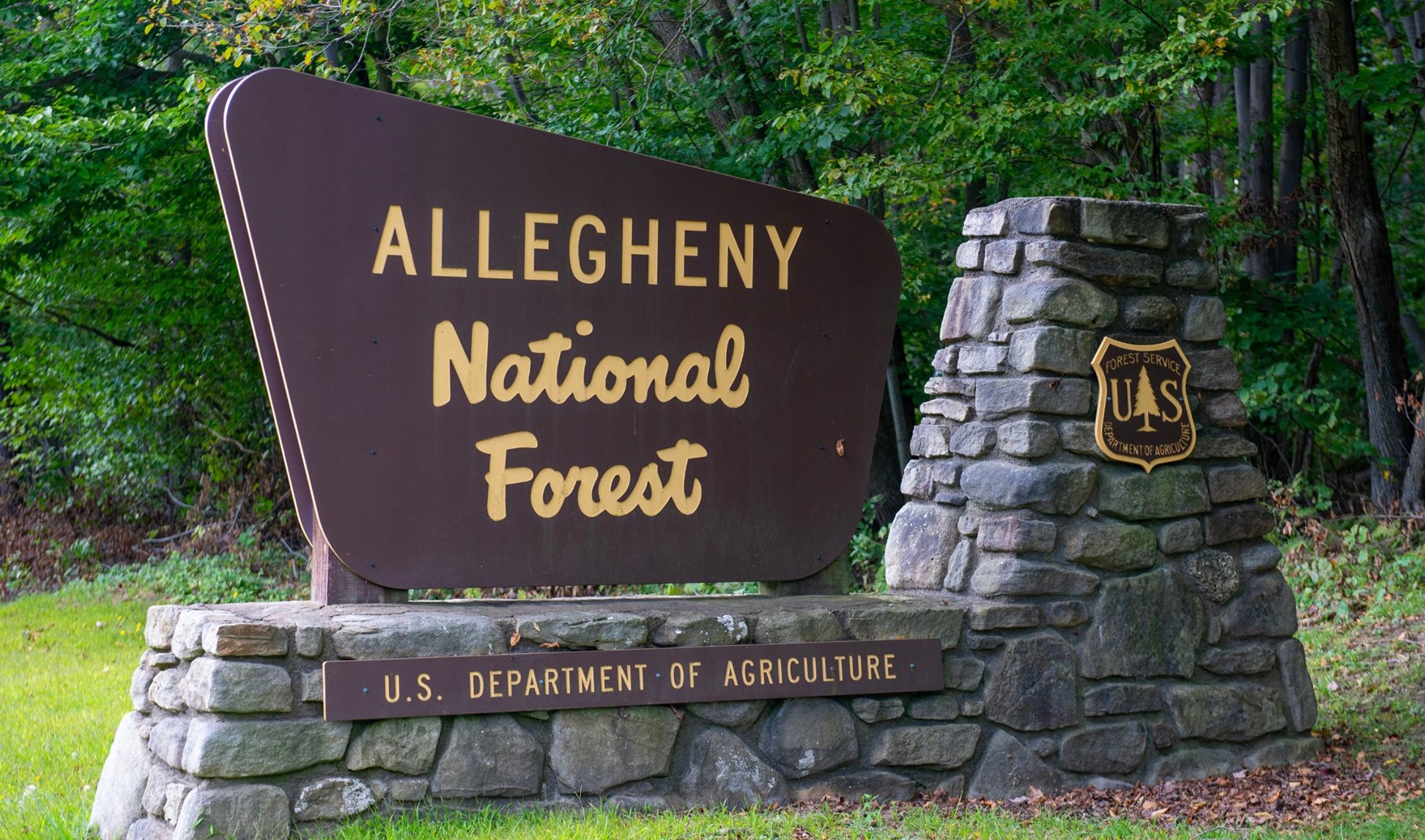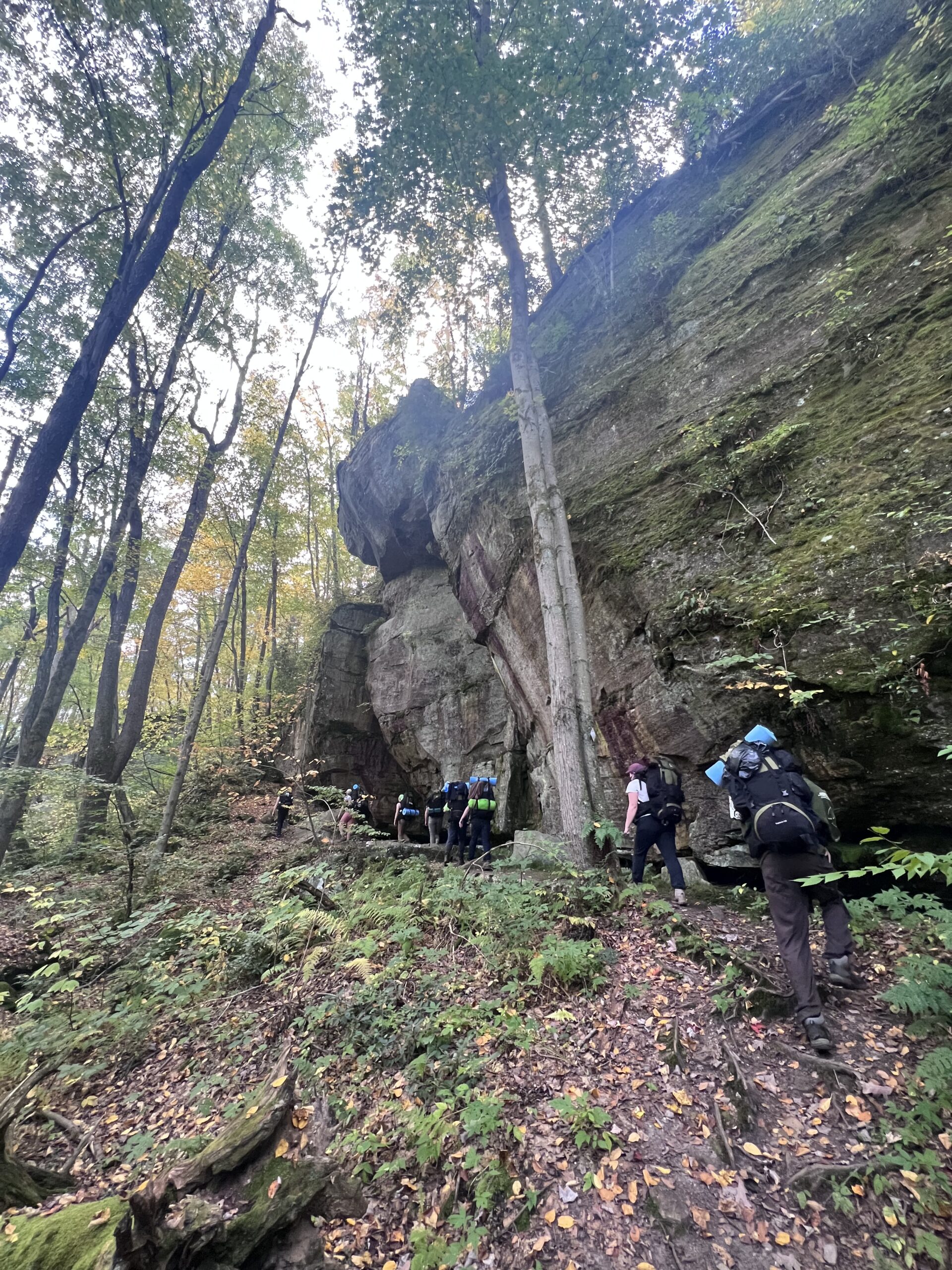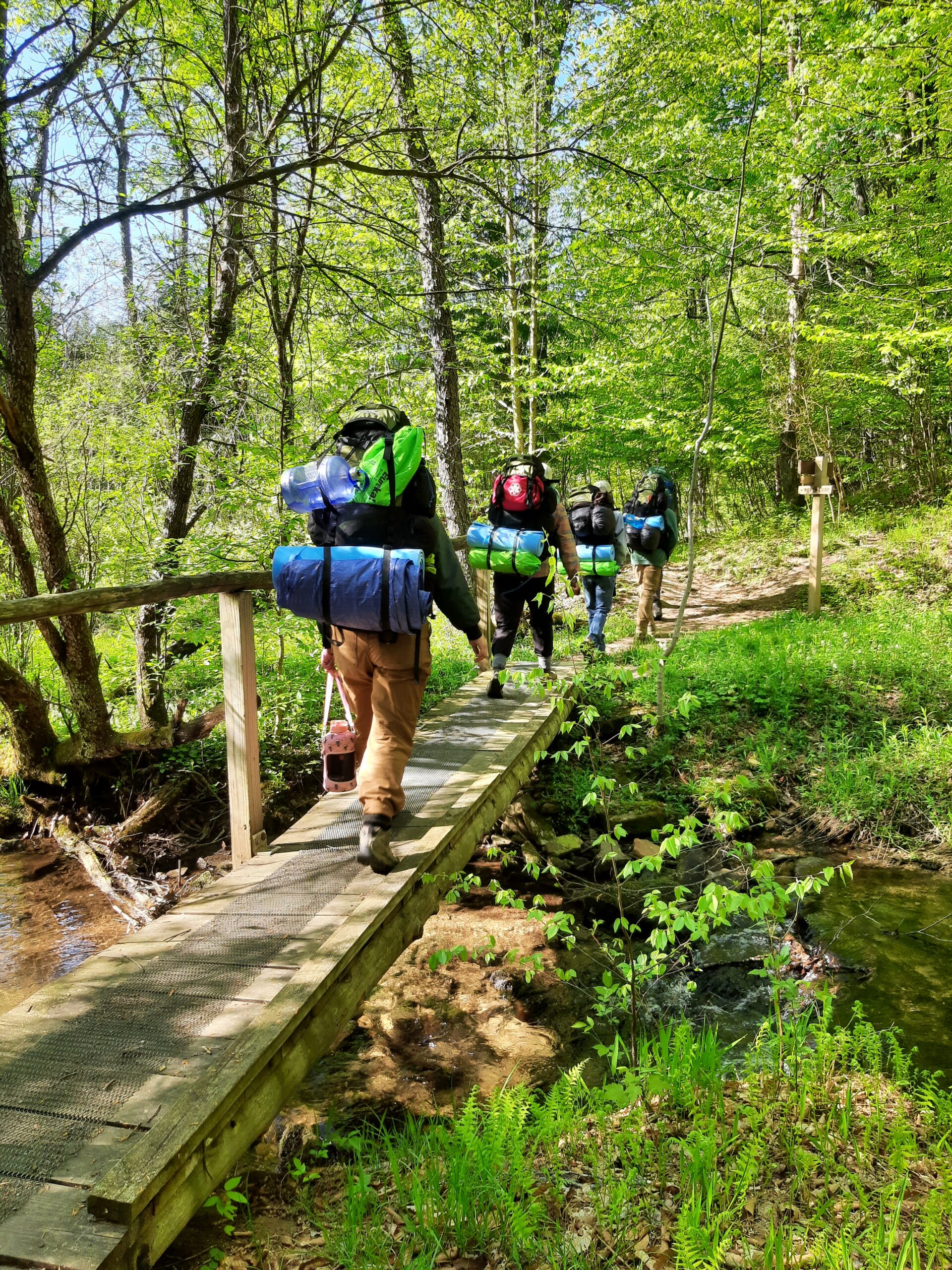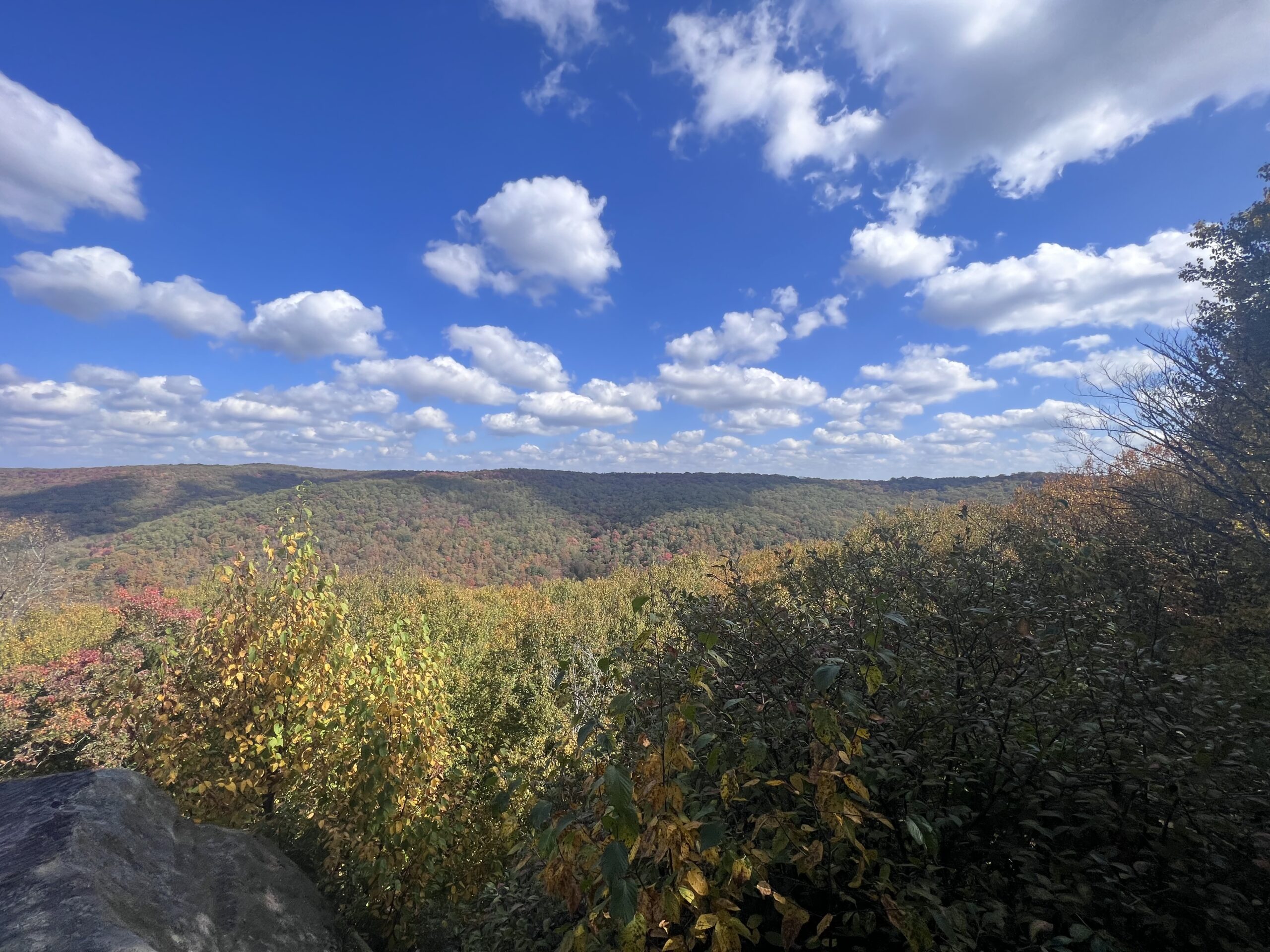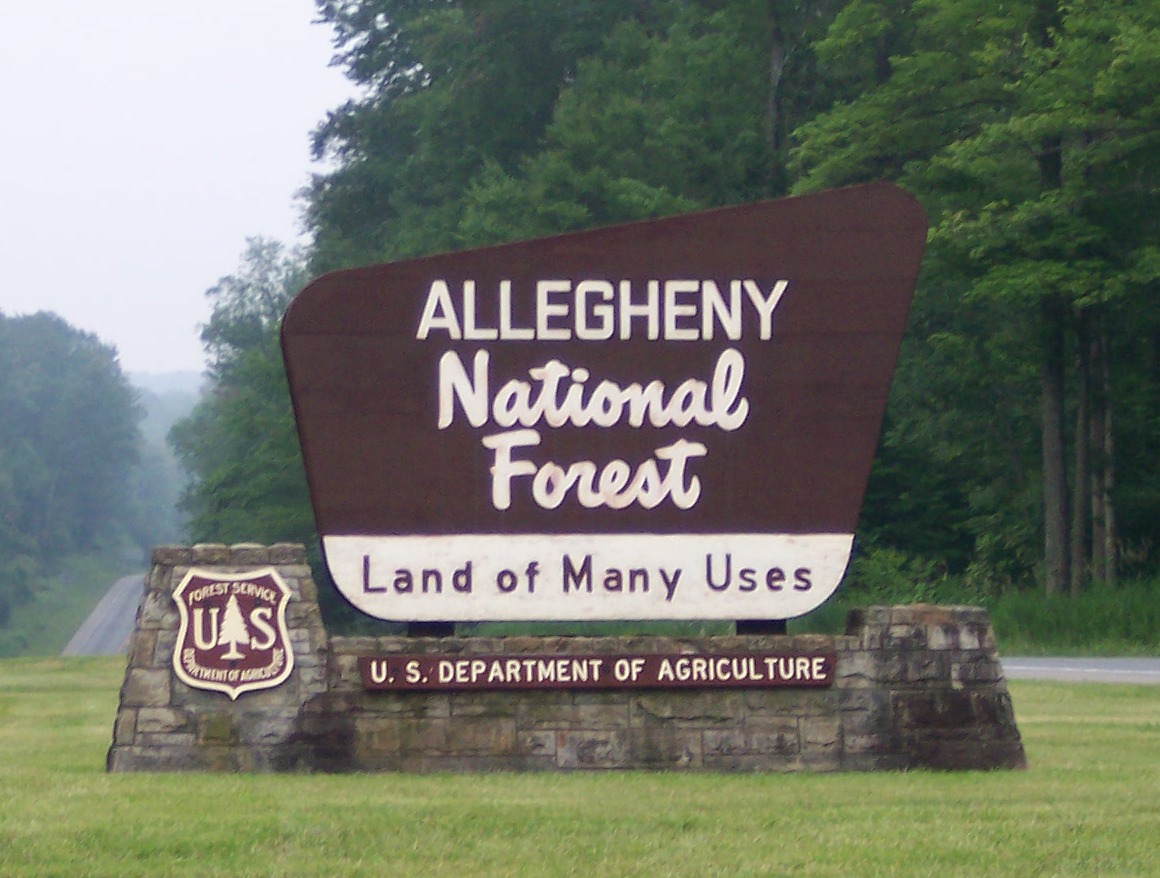By USDA Forest Service – Allegheny National Forest
Information from Kate Fenstermacher, a Recreation Technician on the Allegheny National Forest’s Bradford Ranger District
For those who live in places like Pittsburgh or Philadelphia, the Allegheny National Forest (ANF) can be a daunting place to take a first backpacking trip. The forest is a far cry from city life… trees as tall as buildings, the constant songs of birds or chittering of squirrels, roots and rocks for your feet to navigate, and inky-black darkness at night.
The U.S. Department of Agriculture, Forest Service offered its first LNT Urban Connections backpacking program at Allegheny National Forest in 2023, and the ANF plans to offer several more similar programs in 2024.
In 2023, the ANF offered five different overnight backpacking trips. These trips provided hands-on learning experiences that taught Leave No Trace principles, beginner backpacking skills, and the mission of the Forest Service: to sustain the health, diversity, and productivity of the nation’s forests and grasslands to meet the needs of present and future generations.
The ANF partnered with the PA Outdoor Corps, a statewide effort from the PA Department of Conservation and Natural Resources (DCNR) that gives paid work experience, skills training, professional development, and environmental educational opportunities to youth and young adults who complete recreation and conservation projects on Pennsylvania’s public lands. Crews based in places like Pittsburgh or Wilkes-Barre were able to spend part of their Outdoor Corps time with the forest technicians at the Allegheny National Forest.
What did an average trip look like?
Kate Fenstermacher, a Recreation Technician on the ANF’s Bradford Ranger District, gave an overview of what the program in 2023 looked like with Urban Connections.
For example, during one of the trips last year, a crew made up of about eight participants arrived on a Monday at the Marienville Ranger Station. For many of the crew members, it was their first-ever backpacking trip. They had a variety of comfort and knowledge when it came to the outdoors, but most of them had never experienced backpacking.
Forest Service staff lent all essential gear for the trip – a tent, backpack, cooking utensils, backpacking cooking stove, and so on. They showed the participants how to pack the backpacks correctly, as well as gave a talk on safety protocols and a reminder of what to expect during the program.
Together, the participants drove to the Minister Creek trailhead off Route 666. “Triple 6” as it’s known by the locals provided a good laugh for participants who were a little superstitious about the name. At Minister Creek trailhead, the coordinators helped everyone set up their tents for dispersed camping, paying special attention to let them know how to select a good camping spot.
While setting up camp, they also took a moment to talk about some of the Leave No Trace Principles. The seven principles of Leave No Trace offer guidance on how to minimize impact while experiencing the outdoors and natural spaces. They talked about a Leave No Trace Principle: Plan Ahead and Prepare. Travelers are encouraged to look up how to get where they’re going, what facilities are available, local terrain, rules and regulations, what communities are nearby, and any special concerns for the area.
Image: Participants backpacking along Minister Creek, courtesy of Kate Fenstermacher
Another one of the principles, Travel and Camp on Durable Surfaces, is especially important when dispersed camping. “Dispersed camping,” or camping outside of a designated campground , can have detrimental effects on the environment and wildlife if not done properly. By setting up camp on durable surfaces that were already bare of most plants, the backpackers were able to limit their impact.
Minimizing Campfire Impacts is another LNT principle that was discussed. Participants were encouraged to discuss if a fire was necessary for the camping experience. Although campfires can seem like a quintessential camping experience, they are not always needed, as in this case, since portable propane stoves were provided.
The participants spent their first official night in the Allegheny National Forest. For many of them, this was the first time they had ever camped somewhere so remote. Some participants mentioned that they didn’t realize it would get so dark! Eventually, everyone was able to get to sleep.
On Tuesday, Kate and the rest of the coordinators met the participants at the trailhead. They packed up their tents and the rest of their gear into the backpacks and planned for their first hike.
Image: Participants backpacking on the Urban Connections journey, courtesy of Kate Fenstermacher
The participants hiked about three miles on the Minister Creek Trail to the Triple Forks campsite, where the Minister Creek trail system intersects with the North Country Trail. Once there, it was time to rest and relax again. The team spread out their tents for another night of dispersed camping in the Allegheny National Forest.
On Wednesday, the backpackers prepared for another round of hiking… this time, to see a beautiful overlook! Although the participants enjoyed each mile of their hike on the Minister Creek Trail, many were particularly excited to hike the three miles to the overlook and have the reward of a gorgeous view. From the Minister Valley Overlook, the participants were able to get a good view of part of the Allegheny National Forest. The program coordinators made sure to point out some scenic features while there.
Image: The Minister Valley Overlook, courtesy of Kate Fenstermacher
After enjoying the overlook and resting for a bit, the participants hiked another .75 miles back to the Minister Creek Trail. By Wednesday, all of the participants had helped teach a Leave No Trace Principle. Teaching these principles to each other allows the program participants to truly understand the Leave No Trace guidelines and understand the impacts of what they do while exploring nature. At this point in the program, each participant was officially a Leave No Trace Level 1 instructor, able to formally pass along the LNT info to others.
On Wednesday night, the participants spent one final night backpacking in the Allegheny National Forest, as they set up their tents one last time for dispersed camping back at the Minister Creek trailhead. They woke up on Thursday morning, packed up their gear into their backpacks, and returned to the Marienville District Ranger Station.
At the ranger station, the participants said goodbye to the gear that had helped them backpack through the forest for the last few days. They unpacked their backpacks, made sure that all the equipment was accounted for, and returned their gear to the Allegheny National Forest recreation technicians.
Together, they spent a little more time at the Marienville Ranger Station, talking about potential Forest Service careers and ways that they could put their newfound skills to use.
What’s next?
This summer, youth crews from Harrisburg, Erie, and Pittsburgh will continue to have similar experiences. These groups will be learning Leave No Trace principles, how to properly set up a campsite, and beginner backpacking skills throughout a week-long stay on the ANF.
ANF staff are excited and grateful to continue to provide the LNT Urban Connections backpacking program. It offers opportunities to share the Forest Service’s values of stewardship and conservation by creating impactful experiences for the public.
About the USDA Forest Service – Allegheny National Forest:
Established in 1923, the Allegheny National Forest (ANF) is Pennsylvania’s only National Forest. Situated on the Allegheny Plateau, the forest is comprised of 514,029 acres in the northwestern corner of the state. The slogan “Land of Many Uses” captures a vision of a healthy, vigorous, working forest that provides timber and wood products, watershed protection, access to underground minerals, ties to cultural history, a diversity of wildlife habitats, and outstanding outdoor recreation opportunities — not only today but in a sustainable way so future generations can enjoy these benefits.
Related Articles
Things to do around Kinzua Bridge State Park during Skywalk renovations
Read MoreAllegheny River Cleanup receives 2024 Outstanding Wild and Scenic Rivers Stewardship national award
Read MoreANF snowmobile trails open for the winter season
Read MoreAuthor: Guest Contributor
The Pennsylvania Wilds is home to more than 2 million acres of public land, 50 state game lands, 29 state parks, 8 state forests, 2 National Wild & Scenic Rivers, abundant wildlife, hundreds of miles of land and water trails, some of the darkest skies in the country, and the largest elk herd in the northeast.
The PA Wilds team is grateful to share the many stories of this region through the words and images of our talented guest contributors.



